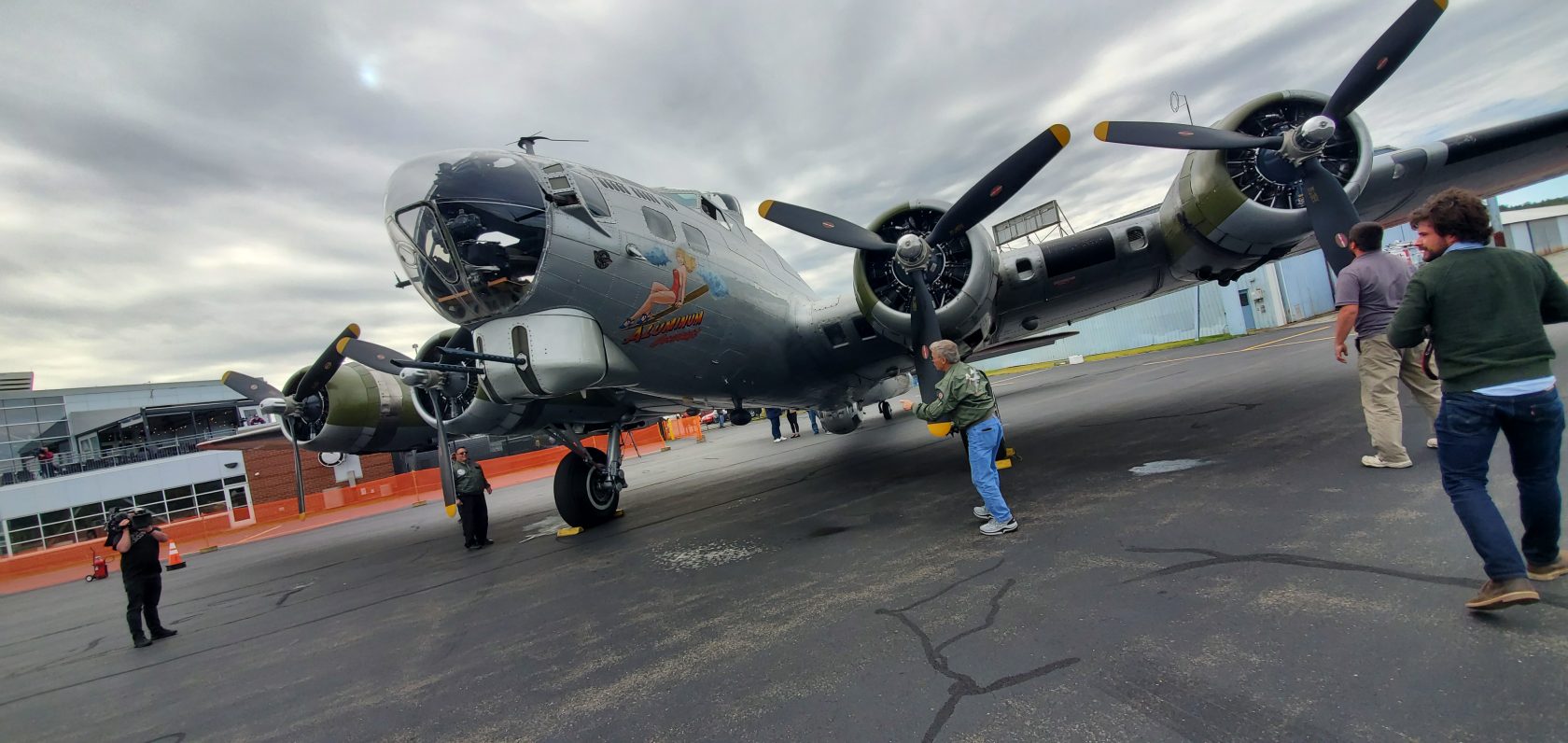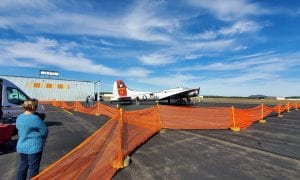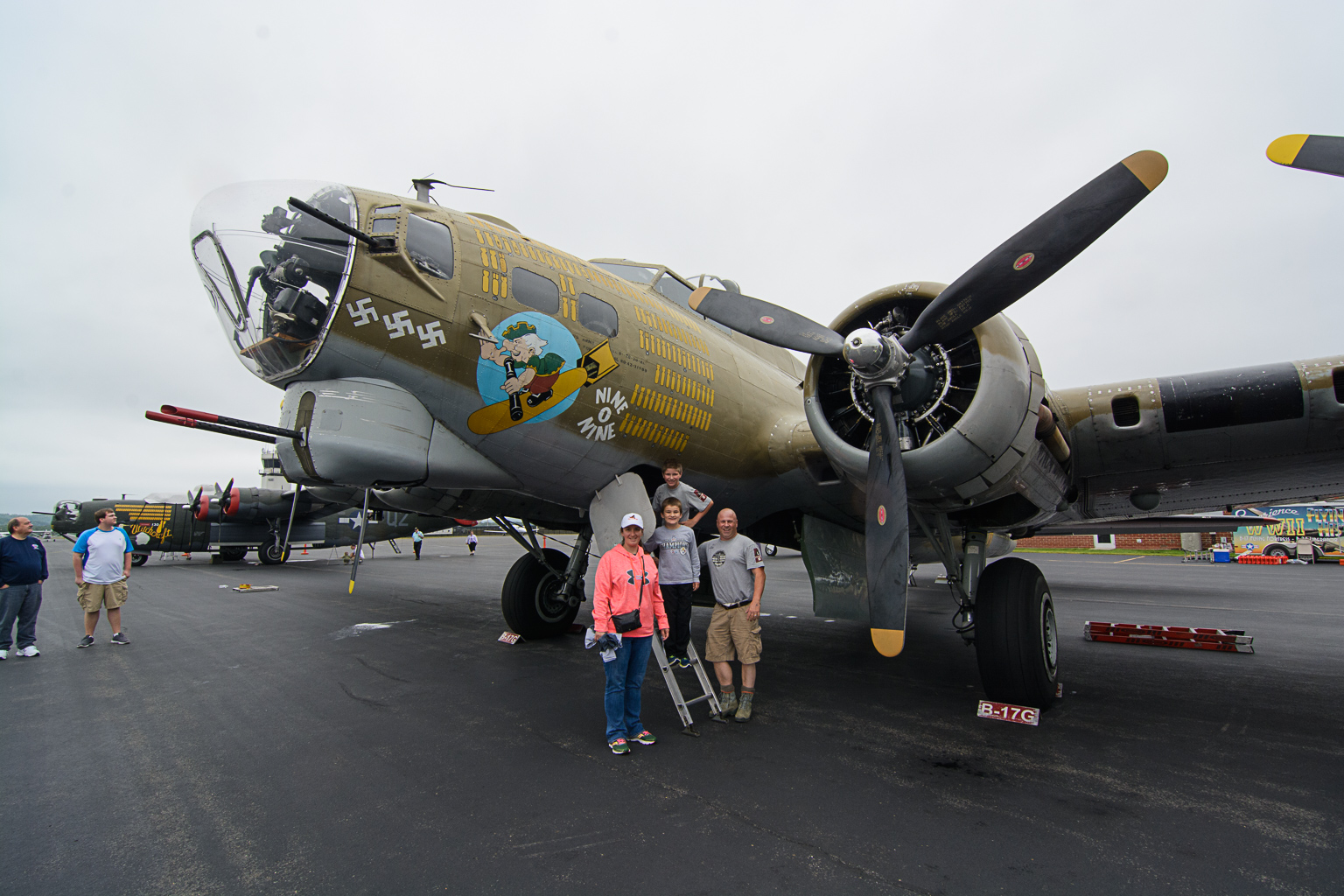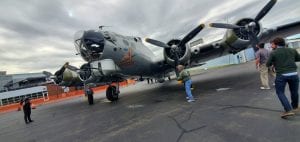
The Aluminum Overcast B-17 sitting back on the runway after we had landed. The plane’s pinup decal, a frequent addition to bombers of that era, can be seen on the right side of the plane’s nose. (Photo by Peter Currier)
WESTFIELD- Fall is the time of year in New England where people may want to go on a “foliage tour” of sorts from the sky as a cool seasonal activity. There are many ways one can seek to do so with any reasonable budget. You could fly over the Connecticut Valley with a hot air balloon, perhaps a helicopter, or even a World War II era Boeing B-17 Flying Fortress Bomber equipped with defensive machine gun posts.
It’s really a matter of preference.
On Thursday, the Experimental Aircraft Association (EAA) gave a group of reporters the opportunity to explore the third option by taking off in the Aluminum Overcast B-17 to experience what it was like to be in the air in one.
If one was a patron at Sok’s Runway Restaurant at Barnes Regional Airport last week, you may have seen the bomber parked outside the restaurant after it had arrived from Hyannis.
The group of press began arriving for the free media flight on Thursday at about 1 p.m.. It had taken a couple of hours after that to actually be in the sky, so in the meantime we were briefed on some safety measures as well as the history of the plane itself.
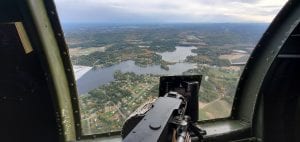
A view from the right side gunner position towards the back section of the plane. The side guns and a couple of guns in the nose were modified .50 caliber M2 Browning Machine Guns. They were typically used to fend off enemy fighter planes. (Photo by Peter Currier)
Tom Ewing, one of the two pilots for the Aluminum Overcast, talked about how instrumental the B-17 was in the allies winning World War II. He said that the most highly produced commercial plan, the 737, has not had as many of them made as the B-17 did in a span of just a few years. The 737 has about 10,000 units being used globally, while the B-17 was made 12,731 times just in WWII.
Today, barely a dozen still exist, with fewer being airworthy.
Ewing said that he and the other volunteers on the flight with the EAA work with the bomber to help preserve the history of what he calls “The greatest generation.’
“The people who served, when they came home they didn’t talk about it much,” said Ewing.
After being told some safety information, we boarded the Aluminum Overcast. Each person claimed a seat up and down the plane. One reporter sat in a seat behind the cockpit, myself and two others sat in the middle radio room, and others sat back in the main fuselage.
We had to wait for the fighter jets that were out on flights from Barnes to come back so we could use the runway. In the meantime, the engine was turned on so the oil could heat up. This is when I learned that B-17s have a tendency to fill the cabin with fumes from the engine right when they are turned on. I was reassured that it was normal, and the fumes did go away quickly due to poor insulation within the aircraft.
I would be lying if I said I wasn’t a little nervous, considering the tragedy that unfolded at Bradley International Airport the week before. I was put at ease when I realized that this particular bird had been upgraded in the 1990s, and the instruments in the cockpit were similar to that of a modern plane.
After we finally took off and reached a sufficient altitude, we were able to get up from our seats and “walk” around the plane. I put quotes around walk, because the combination of the cramped nature of the plane and the turbulence we experienced made walking a bit of an adventure on its own.
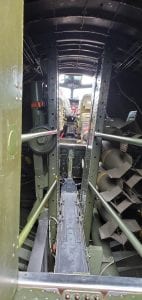
Separating the radio room from the cockpit and nose gunner was this narrow walkway. The walkway is exactly as narrow as it looks, and is an adventure to get through with the amount of turbulence the plane experienced. One may notice the fake bombs, as underneath the walkway is the door that opens to drop the payload on the target. (Photo by Peter Currier)
Throughout the 20 minute flight, each person was given the opportunity to sit underneath the cockpit in the seat of the nose gunner. It was truly one of the cooler experiences of my life. I had a perfect view of the changing leaves for miles on end. Depending on how one sits, they could look directly down to see only a pane of glass separating you from the ground.
Luckily, we only went up about 2,000 feet in the air, as it was rather chilly as it was. The poor insulation of the B-17 could be felt, but not nearly as bad as it would have been at standard bombing and traveling height.
I do not envy those who served in these planes in WWII. I cannot imagine being in the cramped, cold environment for hours or days on end while possibly being in a combat situation against a crew under the same conditions. I came away with a good amount more respect for those crewmen than I had before.
After what seemed like no time at all, we went back towards Barnes to land. I have been in many planes before landing on different runways across North America, I have never had as smooth a landing as pilots Tom Ewing and Rick Fernalld showed us with the Aluminum Overcast. There was a good five second period where I don’t think I realized we were back on the ground.
The Experimental Aircraft Association has more information available on its website at eaa.org.

